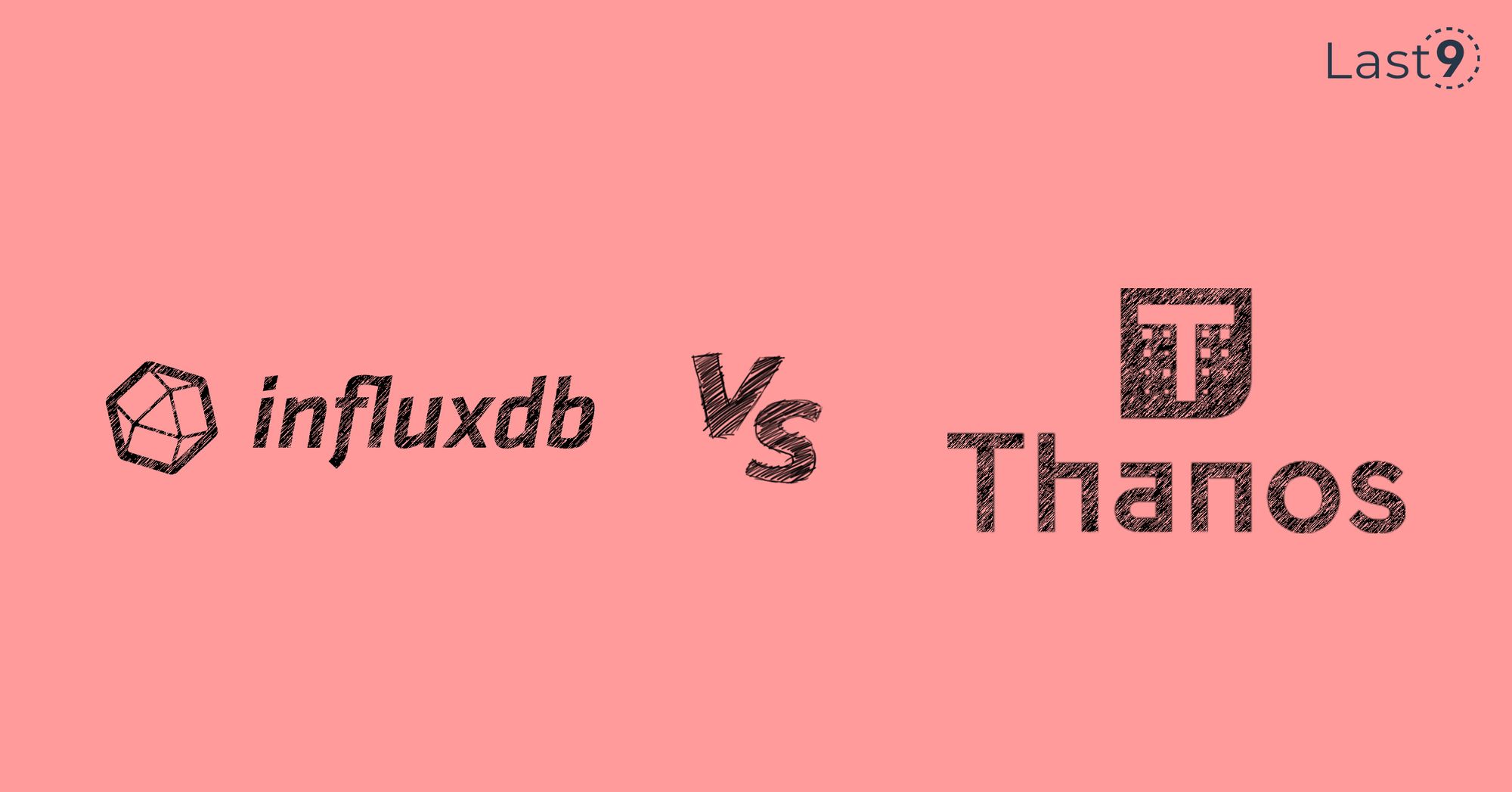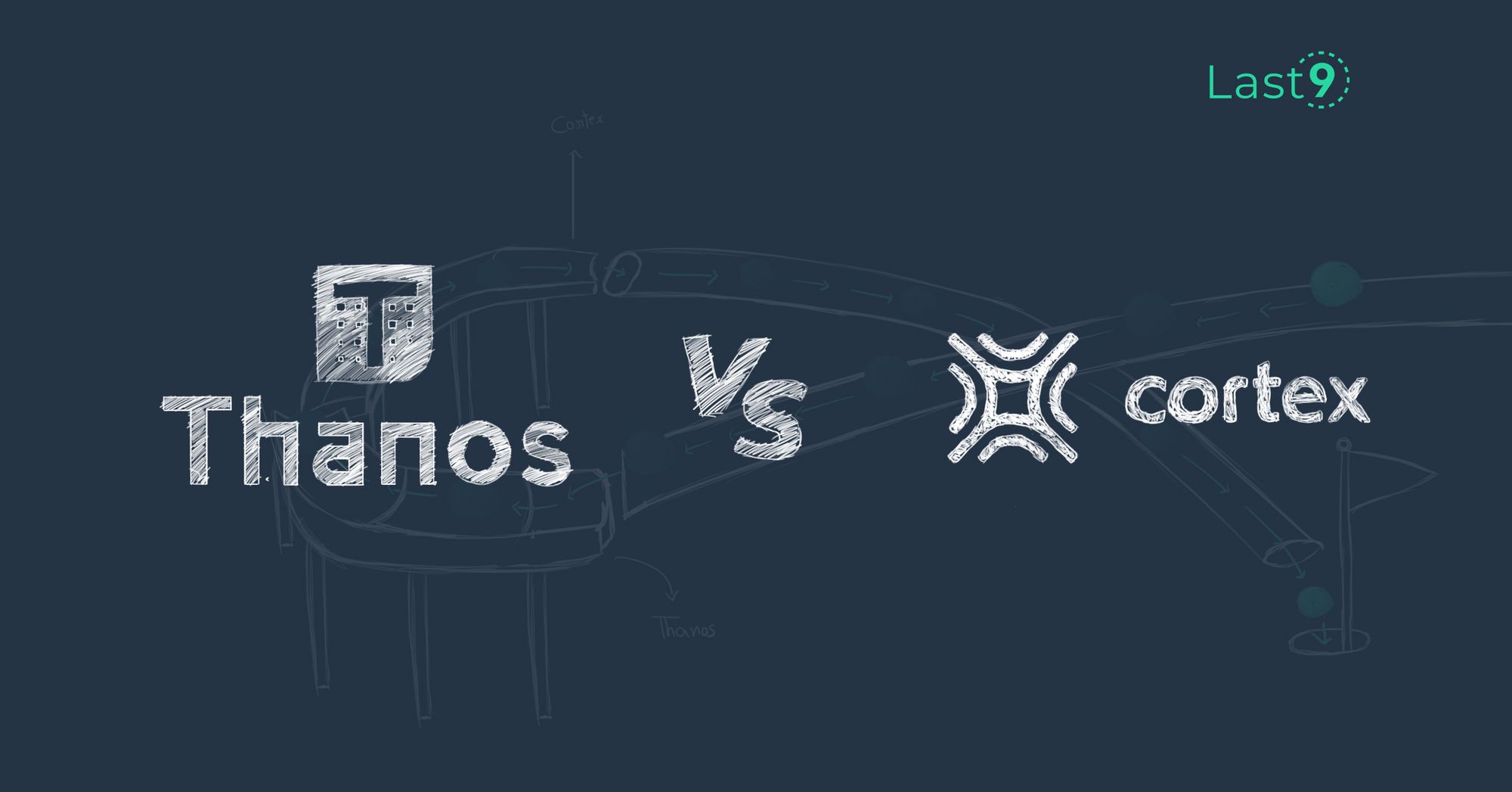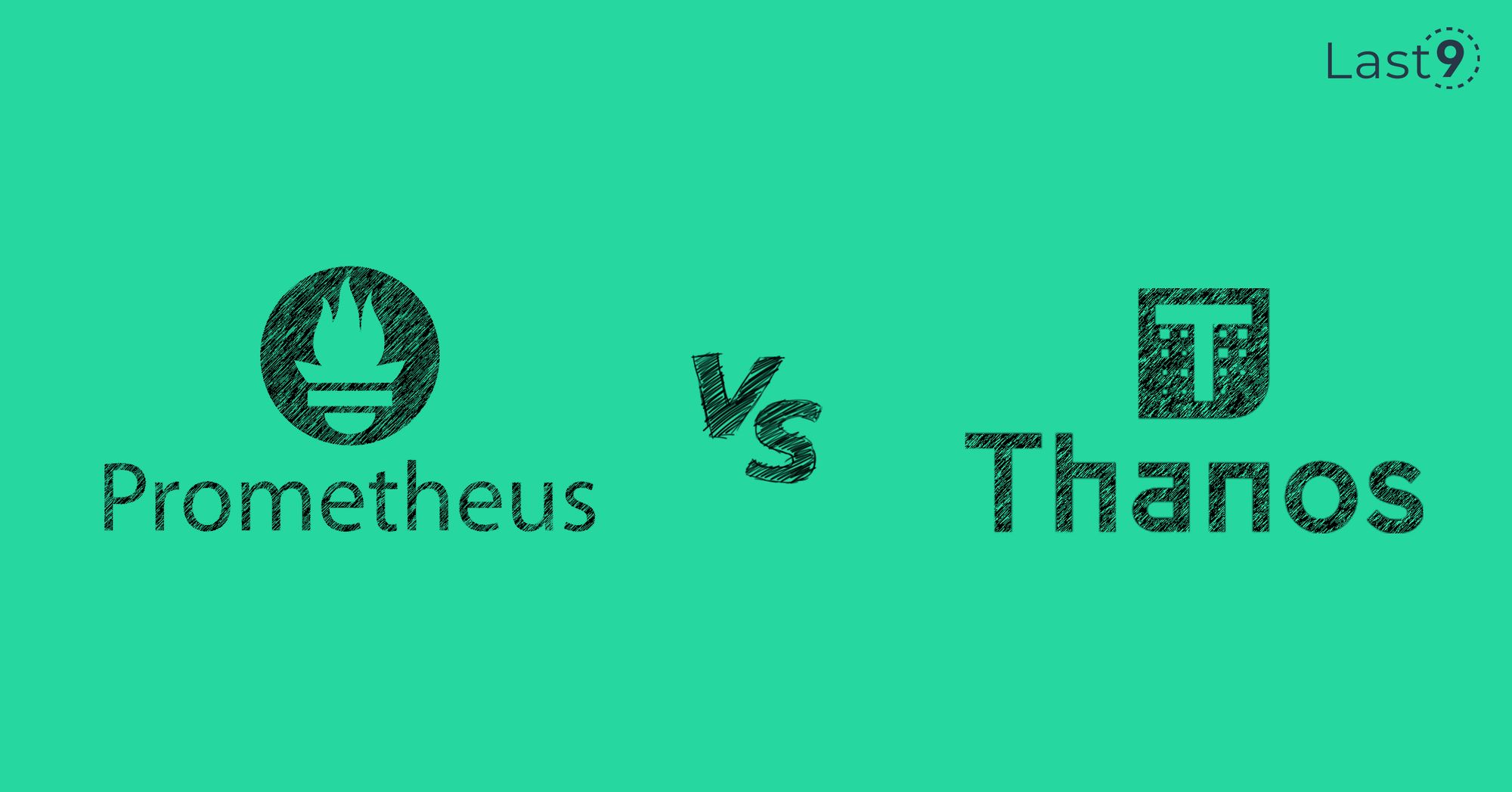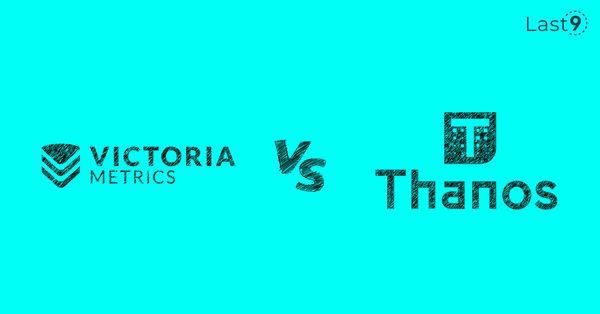InfluxDB and Thanos are two prominent names that have gained significant attention for their capabilities in the world of time series databases(TSDB) for monitoring cloud-native environments. Both offer unique features and functionalities for large-scale data storage and analysis. This article will delve into the similarities, differences, pros, and cons of InfluxDB and Thanos. Additionally, we will explore their scalability, integration with Grafana, and support for Kubernetes environments.
InfluxDB Overview
InfluxDB is an open-source time series database designed to handle high write and query loads efficiently. It excels at handling real-time data ingestion, storage, retrieval, and visualization. InfluxDB provides a domain-specific query language called InfluxQL, simplifying working with time series data. It offers built-in support for downsampling, retention policies, and continuous queries, enabling data lifecycle management.
Thanos Overview
On the other hand, Thanos is a highly scalable, open-source platform that extends the capabilities of Prometheus, a widespread monitoring and alerting tool. Thanos is a Cloud Native Computing Foundation (CNCF) project designed to overcome the limitations of Prometheus' single-node architecture and provide a horizontally scalable, highly available solution for long-term storage and analysis of Prometheus data. Thanos leverages object storage to create a global and durable time series database. Thanos works with PromQL as a query language.
Thanos integrates seamlessly with Prometheus, enhancing its capabilities for long-term storage and global querying of metrics. Users can create a highly available, horizontally scalable setup by deploying Thanos alongside Prometheus. Thanos federates data from multiple Prometheus instances, allowing users to query and analyze data as a unified dataset. It leverages object storage to provide a durable and scalable long-term storage solution for Prometheus metrics. With Thanos, organizations can achieve reliable and scalable metrics storage, extended data retention, and efficient querying capabilities, augmenting Prometheus' monitoring and alerting functionalities.
High-Level Comparison
| Parameter | InfluxDB | Thanos |
|---|---|---|
| Scale | Horizontally | Horizontally and supports multi-tenancy |
| License | MIT for open-source version, proprietary for enterprise version | Free and open-source |
| Customer Support | Community support for open-source version, dedicated support for enterprise version | Community support |
| Ease of integration | Supports many integrations via Telegraf agent or native API | Supports Prometheus remote_write and remote_read protocols |
| Features | Time-series database with built-in query language (InfluxQL/Flux), high write and query speeds, dashboarding (Chronograf), alerting (Kapacitor) and ETL (Telegraf) | Distributed system for long-term storage and querying of Prometheus metrics with a global view, downsampling, compaction, replication, caching and encryption |
| Alerting support | Via Kapacitor | Via Prometheus Alertmanager |
| Visualization | Via Chronograf | Via Grafana |
| In-built Cardinality limits if any | No, can be configured via the max-values-per-tag setting | No, but can be configured via the max_series_per_query setting |
| License | MIT for open-source version, and proprietary for enterprise and cloud versions | Apache 2.0 |
| Deployment model | Single-node or clustered for open-source version, clustered for enterprise and cloud versions | Microservices-based architecture with components such as sidecar, store, querier, ruler, compactor and receiver |
| Can cost be derived from the deployment model | Yes, for enterprise and cloud versions based on data volume, retention period and number of nodes | No, it depends on the underlying infrastructure and cloud provider costs |
| Compute cost + Storage cost | For InfluxDB Cloud, the compute cost is $0.01 per 100 queries. For InfluxDB Cloud, the storage cost is $0.002 per GB per hour. | Depends on the underlying infrastructure and cloud provider costs |
| Disk storage vs. object storage | Disk storage for open-source version, disk or object storage for enterprise and cloud versions | Object storage for long-term metrics storage |
| Long-term storage support | Via InfluxDB Enterprise or InfluxDB Cloud | Via Thanos sidecar and store components |
| Community channel | GitHub, Slack, forums, blogs | GitHub, Slack, blogs |
| Release docs | InfluxData Docs | Thanos Releases |
| Do they offer premium offerings? | Yes | No |
| Are there SLAs? | Yes | No |
| Prometheus/PromQL compatibility? | Partial | Full |
| Query language - PromQL/m3QL/metricsQL | InfluxQL/Flux | PromQL |
| Supported line protocols for ingestion | InfluxDB line protocol, Graphite, Collectd, OpenTSDB | Prometheus exposition format |
| Are any automatic rollups beyond a certain duration? | Yes, via continuous queries or tasks | Yes, via downsampling and compaction |
Similarities
1. Time Series Data: InfluxDB and Thanos are purpose-built for handling time series data, making them highly optimized for efficiently storing and querying such data.
2. High Scalability: Both solutions offer horizontal scalability, allowing you to handle massive amounts of data by distributing the workload across multiple nodes.
3. Open Source: InfluxDB and Thanos are open-source projects with source code and docs available on GitHub, which means they benefit from active community support, frequent updates, and a vast ecosystem of integrations and plugins.
Differences
1. Architecture: InfluxDB follows a single-node architecture, where a cluster consists of multiple instances working together. Conversely, Thanos adopts a distributed architecture, leveraging components like Store Gateway, Query, and Compact that can be scaled independently.
2. Data Federation: Thanos provides advanced data federation capabilities, allowing you to query and analyze data stored across multiple Prometheus instances as a single, coherent dataset. InfluxDB does not natively support this level of data federation.
3. Data Model: InfluxDB uses a flexible tagging system to organize data, enabling efficient filtering and grouping. Thanos relies on the Prometheus data model, which includes metric names, labels, and timestamps, making integrating as a backend with Prometheus-based systems easy.
4. Ecosystem: InfluxDB offers a comprehensive ecosystem with its visualization tool, Chronograf. Conversely, Thanos is tightly integrated with Grafana, a popular data visualization and exploration platform.
Differences Between InfluxDB and Thanos: A Closer Look
InfluxDB and Thanos, while robust time series data solutions, possess distinct characteristics and cater to different use cases. Let's delve deeper into their differences to gain a comprehensive understanding:
1. Use Case Focus: InfluxDB shines in real-time analytics and system monitoring, particularly suited for immediate performance tracking and IoT sensor data analysis. Conversely, Thanos targets long-term storage and global querying of Prometheus metrics, making it an excellent choice for extensive, large-scale data analysis across multiple clusters.
2. Long-term Storage: InfluxDB lacks native support for long-term data storage. On the other hand, Thanos addresses this limitation by providing a robust long-term storage solution, ensuring the durability and accessibility of historical data.
3. Cardinality Handling: InfluxDB may face challenges when dealing with high cardinality data, where the number of unique tags or labels is exceptionally high. Thanos, however, handles high cardinality more efficiently, allowing for smoother operations even with complex datasets.
4. User Interface: InfluxDB offers a user-friendly interface, Chronograf, which enables easy data exploration and visualization. Thanos, in contrast, relies on external tools like Grafana for data visualization, leveraging its extensive features and capabilities.
5. Dependency: Thanos relies on Prometheus as its data source and querying engine, tightly integrating with its ecosystem. InfluxDB, on the other hand, operates independently and does not rely on external tools like Prometheus.
6. Data Ingestion: InfluxDB boasts flexibility in data ingestion, supporting various input methods such as the Telegraf agent or its native API. This versatility allows seamless integration with diverse data sources. In contrast, Thanos depends on Prometheus for data ingestion, leveraging its robust data collection capabilities.
7. Scalability: InfluxDB supports horizontal scalability, enabling adding more machines to the InfluxDB cluster as data volumes increase. On the other hand, Thanos adopts a distributed system architecture designed to scale horizontally across multiple clusters, accommodating vast amounts of time series data.
8. Cost Benefit: InfluxDB offers cost-effective solutions for small to medium-sized deployments, making it an attractive choice for organizations with limited resources. Conversely, Thanos provides an economical option for long-term storage, making it ideal for large-scale applications that require extended data retention.
9. Observability: InfluxDB incorporates a built-in interface called Chronograf, which facilitates data visualization, exploration, and monitoring. Thanos, however, relies on external tools like Grafana for comprehensive data visualization, leveraging Grafana's rich visualization and exploration features.
By considering these differences, users can make an informed decision when choosing between InfluxDB and Thanos, aligning their selection with the specific requirements of their use case, scale, data storage needs, and cost considerations.
Downsides
InfluxDB: While InfluxDB offers excellent performance for high write and query loads, it may face challenges when handling extremely large datasets due to its single-node architecture.
Thanos: The initial setup and config of Thanos might be more complex compared to InfluxDB, as it involves several components and requires knowledge of Prometheus ecosystem concepts.
Pros:
InfluxDB:
- Real-time data processing and analytics.
- Built-in support for retention policies and continuous queries.
- High availability options for enterprise deployments.
- Extensive community support and ecosystem.
Thanos:
- Long-term storage and global querying for Prometheus.
- Improved scalability and fault tolerance.
- Efficient data deduplication and compression.
- Seamless integration with Prometheus using prometheus remote write protocol and Prometheus exporters.
Scale and Performance
Both InfluxDB and Thanos are designed to handle large-scale time series data. InfluxDB's performance is optimized for high write and query loads, making it suitable for real-time analytics. Thanos leverages object storage to scale horizontally, enabling it to handle massive amounts of data and provide long-term storage for Prometheus metrics.
InfluxDB Replication: InfluxDB follows a single-node architecture by default, where a cluster consists of multiple instances working together. However, InfluxDB does not natively provide built-in replication mechanisms for data redundancy and high availability. To achieve replication in InfluxDB, you must set up a separate mechanism, such as clustering or data replication at the storage level, to ensure data redundancy and fault tolerance. InfluxDB Enterprise, the commercial version of InfluxDB, offers features like high availability and clustering for improved replication and failover capabilities.
Thanos Replication: on the other hand, Thanos has replication as a fundamental aspect of its architecture. Thanos adopts a distributed architecture that allows for data replication across multiple clusters. It introduces components such as Store Gateway, Query, and Compact that can be scaled independently to handle high volumes of data and ensure data redundancy and fault tolerance. Thanos leverages object storage as a durable and scalable backend for replicating and storing Prometheus metrics. By replicating data across clusters, Thanos provides a highly available and globally accessible time series data storage solution.
Grafana Integration
InfluxDB and Thanos can seamlessly integrate with Grafana, a powerful data visualization and exploration tool. Grafana offers native support for querying and visualizing data from InfluxDB and Thanos, making it easy to create insightful dashboards and perform ad-hoc analysis.
Kubernetes Support
Both InfluxDB and Thanos have excellent support for Kubernetes deployments. They can be deployed as stateful sets or containers, allowing for easy orchestration, scaling, and management within Kubernetes clusters. Additionally, Thanos can leverage Kubernetes' persistent volume claims to store data on object storage, providing durable and scalable storage solutions.
Deployment
From a deployment perspective, there are some key considerations for deploying InfluxDB and Thanos:
InfluxDB Deployment
1. Single-Node or Cluster: InfluxDB can be deployed as a single-node instance or a cluster of multiple instances working together. A single-node deployment is suitable for small to medium-sized workloads, while a cluster is recommended for larger-scale deployments that require high availability and horizontal scalability.
2. Hardware Requirements: InfluxDB's hardware requirements depend on the data volume and workload. Ensure the chosen deployment environment meets the CPU, memory, and storage requirements to handle the anticipated workload.
3. High Availability: For high availability, InfluxDB offers the InfluxDB Enterprise edition, which provides clustering capabilities. Multiple InfluxDB instances work together in a cluster deployment to ensure redundancy and failover, minimizing downtime.
4. Networking and Load Balancing: Proper network configuration and load balancing are crucial for distributing traffic and optimizing performance in InfluxDB cluster deployments. Load balancers help distribute requests evenly across multiple instances, improving scalability and availability.
Thanos Deployment
Thanos does not run as a sidecar alongside individual Prometheus instances. Instead, Thanos operates as a separate set of components that work with the Prometheus setup. These components include the Store Gateway, Query, Compactor, and Ruler.
The Thanos Store Gateway is a central component that receives data from Prometheus servers and stores it in object storage. Prometheus instances are configured to send metrics data to the Thanos Store Gateway as a remote write target.
The Query component in Thanos allows users to query and analyze the data stored in object storage across multiple Prometheus instances. It provides a unified and coherent view of the metrics data, allowing users to query and aggregate metrics from multiple clusters as if they were a single dataset.
The Compact component in Thanos helps reduce storage space and improve query efficiency by performing compaction and downsampling on the stored metrics data.
The Ruler component in Thanos adds long-term and cross-cluster rule evaluation capabilities. It enables users to define and manage alerts and recording rules across multiple Prometheus instances.
1. Prometheus Integration: Thanos is typically deployed alongside Prometheus instances. Each Prometheus instance sends its metrics data to a Thanos Store Gateway, which stores the data in object storage. Ensure that Prometheus instances are correctly configured to send data to the Thanos components.
2. Thanos Components: Thanos comprises various components, including Store Gateway, Query, Compact, and Ruler. Each component needs to be deployed and configured appropriately. Pay attention to resource allocation and scaling considerations for each component based on the expected workload.
3. Object Storage: Thanos leverages object storage, such as Amazon AWS S3, Google Cloud Storage, or MinIO, for long-term storage of metrics data. Set up and configure the chosen object storage system to work seamlessly with Thanos.
4. Scalability and High Availability: Thanos is designed to be highly scalable and fault-tolerant. Deploying multiple instances of each Thanos component and ensuring proper load balancing and redundancy will provide scalability and high availability.
5. Monitoring and Alerting: Implement monitoring and alerting mechanisms for both Prometheus and Thanos deployments. Tools like Prometheus itself, Grafana, and Alertmanager can be utilized to monitor the health and performance of the deployments and set up alerts for critical events.
In summary, deploying InfluxDB involves considering the deployment scale, hardware requirements, and high availability options. Thanos deployment focuses on integrating with Prometheus instances, configuring Thanos components, leveraging object storage, and ensuring scalability and high availability through redundancy and load balancing. Proper monitoring and alerting mechanisms should be in place for both deployments to ensure optimal performance and availability.
Conclusion
InfluxDB and Thanos are robust monitoring solutions for handling time series data, each with unique strengths and use cases. There are a lot of time series databases, such as Levitate, Cortex, TimescaleDB, VictoriaMetrics, and Grafana Mimir. InfluxDB excels at real-time data ingestion and analysis, while Thanos extends Prometheus to provide long-term storage and global querying capabilities. When choosing between the two, consider data federation needs, scalability requirements, and integration preferences. InfluxDB and Thanos offer robust solutions for managing and analyzing time series data in large-scale and Kubernetes environments, regardless of your choice.



